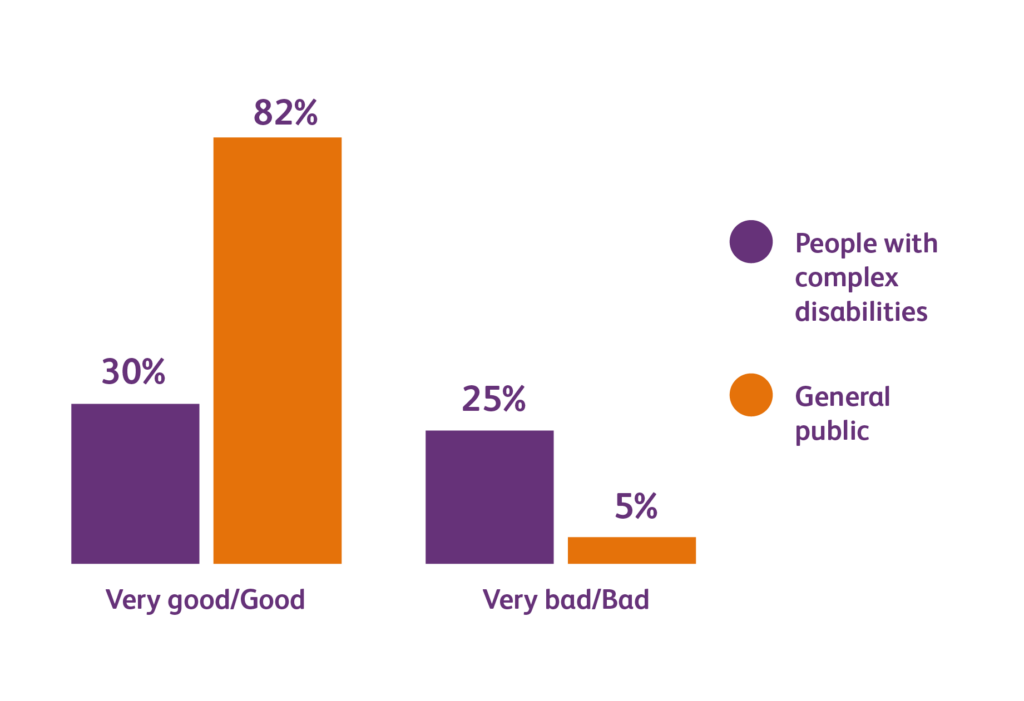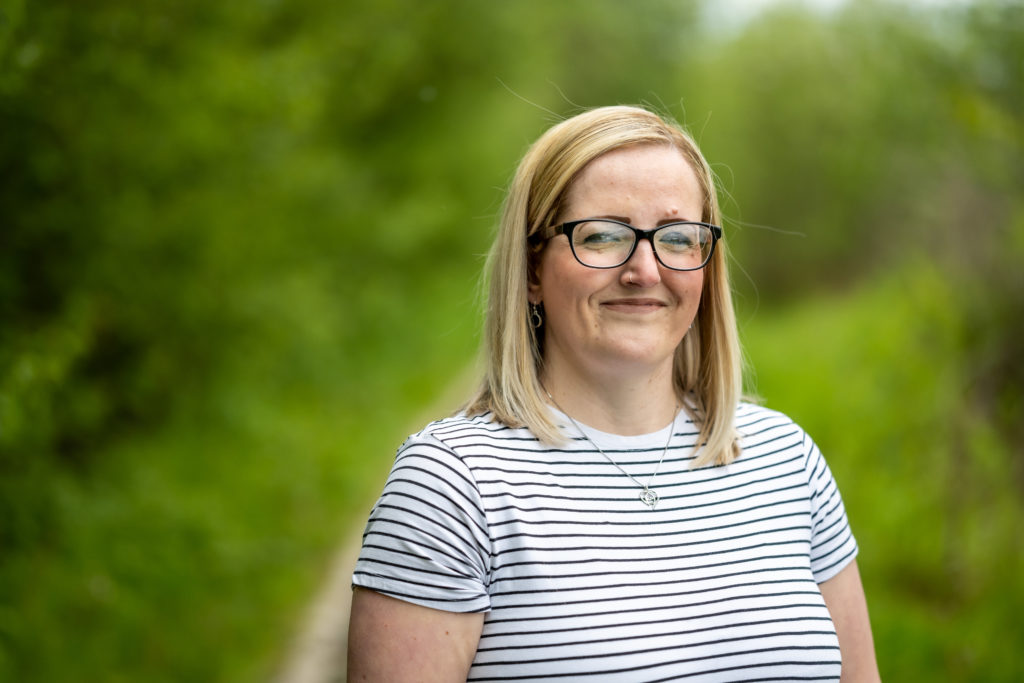Health and wellbeing for people with complex disabilities
For the 2023 update to our Potential and Possibility research, we once again asked people with complex disabilities about their health and wellbeing. This included questions about their levels of happiness and anxiety.
Overall, we found that people with complex disabilities are much less positive about their health in general than they were a year ago.
Read on to find out what our participants had to say.
How is your health in general?
People with complex disabilities are four times as likely to describe their health as bad or very bad (25%) compared with the general population (5%). (Figures for the general population come from the 2021 census.)
People with complex disabilities are less likely to describe their health as good or very good than the general population (30% compared with 82%).

| Very good/Good | Very bad/Bad | |
| People with complex disabilities | 30% | 25% |
| General public | 82% | 5% |
What does it mean to you to be healthy?
“Being able to do all the things that I want to do, feeling well, being fit.”
When asked about what it means to be healthy, many respondents shared that they wanted to:
- Have the energy to do things.
- Be able to see other people.
- Not be in pain.
- Be able to be independent.
Happiness
We asked people to rate their happiness in the last week on a scale from 0 to 10. We then compared these results with data from the Office for National Statistics about other groups in the population.
People with complex disabilities have lower happiness levels on average (6.02), compared with non-disabled people (7.45). Figures for non-disabled people come from the Office for National Statistics.
Anxiety
Using a similar measure to happiness, we asked people to rate their anxiety in the last week on a scale from 0 to 10.
The results show that people with complex disabilities have higher average rates of anxiety (5.09) when compared with non-disabled people (3.12).
Natalie’s story

“I had quite a late diagnosis, so for most of my life I felt no different from anybody else. I know now that I’ve got Usher syndrome type 2, which means that both my hearing and my vision are affected.
“I was self-conscious about using a cane in public or even traveling with my disabled bus pass. It was the idea of being judged by other people that put me off.
“But my communicator guide pushed me to get past my embarrassment and now I go out more – I’ve got some freedom. From shopping to hospital appointments, anything I need her for, she’s there.
“It was so nice to have someone to talk to, someone who knew where you’re coming from.”
Read more about how Natalie rebuilt her confidence with the right support in place.
What do you need to stay healthy?
Responses to this question included:
“Being able to live as full and able as life as possible free from pain, discomfort and able to get enough deep restful sleep.”
“Being able to participate in life. Being able to walk somewhere without being exhausted.”
“Not feeling pain. Being able to move your body when you want to. Having a future knowing you will live. Feeling good. Going out and doing whatever you want to do without worrying about fatigue. Not having to worry about passing out and seizures.”
About this research
Potential and Possibility is an annual piece of research on the experiences and aspirations of people with complex disabilities. The research involves polling, our own survey and insights from audits of Sense services. This year (2023) is the second year we have carried out this research.
These pages reflect the latest information from our 2023 research, building on our findings from 2022.
If you have any questions about the research please contact [email protected].

